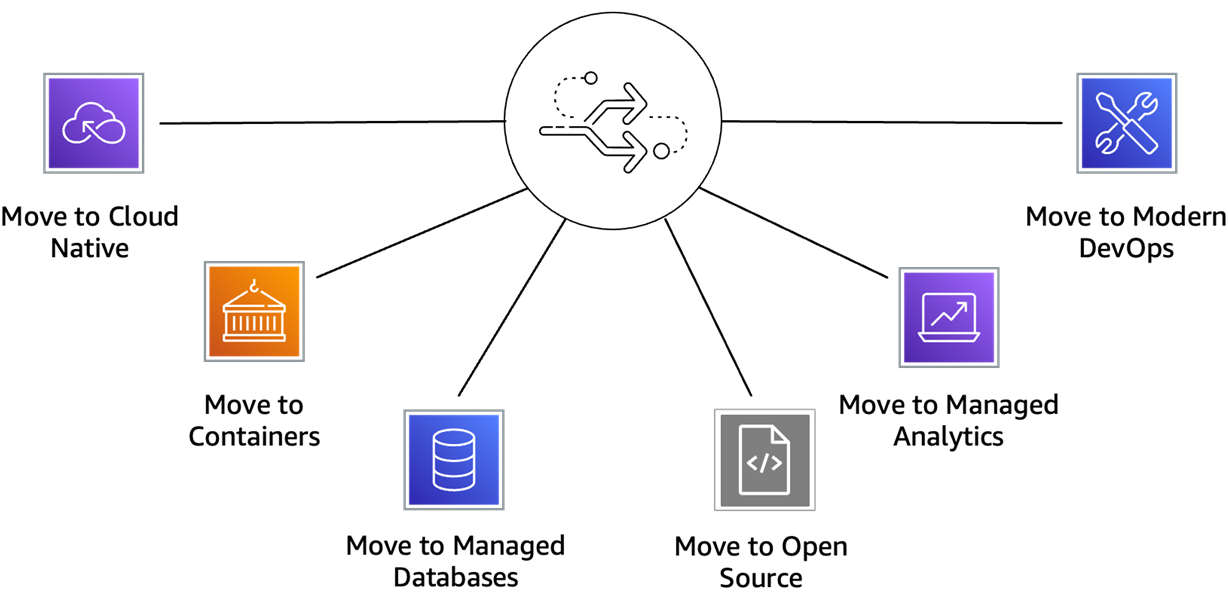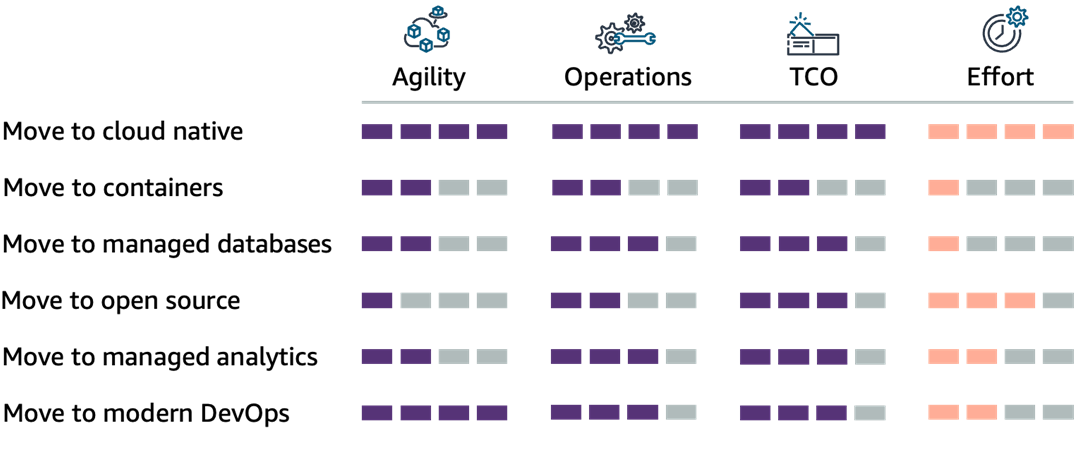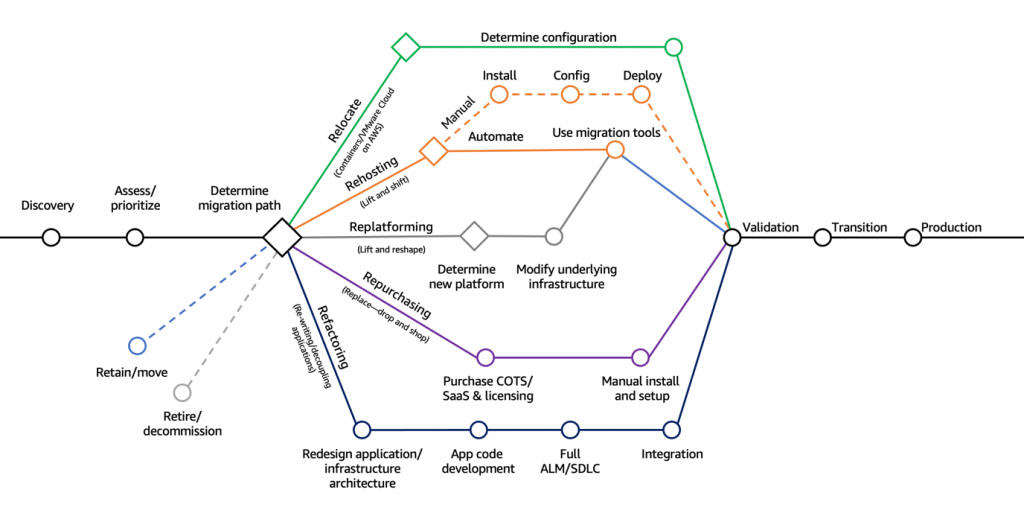As organizations consider moving their applications, data, and infrastructure to the cloud, they encounter numerous challenges and factors to consider. A clearly outlined migration strategy becomes crucial for successfully managing this intricate process.
Do you have full control of your enterprise’s applications? Can you easily identify which ones deliver optimal value, or which ones might be due for retirement, replacement, or migration? If uncertainty clouds your answers, it’s a clear sign that assessing your application portfolio is overdue.
One approach worth exploring is the practice of application portfolio assessment. Throughout this article, we will delve into the essence of application portfolio assessment, its significance, and essential considerations and best practices for executing a thorough and productive evaluation.
What exactly is an application portfolio assessment, and why is it crucial for your organization’s future? Let’s delve into the details.
Understanding Application Portfolio Assessment
An application portfolio assessment is a strategic process employed by organizations to evaluate their existing software applications. The primary objective of this assessment is to pinpoint which applications contribute most effectively to the organization’s goals and align with its overarching objectives.
By conducting such assessments, organizations gain insights to make informed decisions regarding which applications to invest in, retire, or replace. Ultimately, the aim is to optimize the overall application portfolio, enhancing operational efficiency and effectiveness.
Why should enterprises assess their application portfolio?
There are several compelling reasons why organizations embark on application portfolio assessments:
Identifying Strategic Alignment: Determining which applications best serve the organization’s objectives and align with its business goals.
Optimizing Portfolio: Identifying redundant, underutilized, or obsolete applications to streamline the portfolio and enhance overall efficiency.
Consolidation and Integration: Identifying opportunities to consolidate or integrate applications to reduce complexity and improve operational effectiveness.
Addressing Weaknesses: Assessing the current state of the application portfolio to identify gaps or weaknesses that require attention.
Informed Decision-Making: Making data-driven decisions regarding investment, retirement, or replacement of applications to enhance organizational operations.
So, what can you accomplish with application portfolio modernization?
When Should You Conduct an Application Portfolio Assessment?
Assessing an organization’s application portfolio is crucial across various operational domains, regardless of size. Key scenarios include:
Cloud Migration Strategy: Organizations leverage cloud services like Google Cloud, Microsoft Azure, Salesforce, and IBM for agility and scalability. Assessments identify SaaS, IaaS, or PaaS offerings aligning with business objectives.
Post-Merger Integration: Mergers consolidate IT infrastructures, necessitating analysis to eliminate redundancy and seamlessly integrate applications.
IT Cost Optimization: Continuous evaluation identifies cost-saving opportunities in cloud services, infrastructure, and applications.
Complexity Reduction: Streamlining the application portfolio mitigates IT infrastructure complexities, enhancing operational efficiency.
Application Modernization: Assessments identify outdated software hindering innovation, enabling organizations to embrace modernization initiatives.
Risk Management: Evaluations identify and mitigate IT risks, including security vulnerabilities and shadow IT, bolstering cybersecurity posture.
Modernization Pathways
Each legacy application, irrespective of its size and scale, possesses a unique design and architecture. While this diversity exists, there are common pathways available to modernize applications. To assist customers in propelling their modernization endeavors, these are six potential modernization pathways.

Move to Cloud Native Architecture
Embrace agile, scalable microservices built on containers and serverless platforms.
Move to Containers
Achieve rapid deployment and reliable operation at scale through managed services.
Move to Managed Databases
Adopt open source, highly scalable databases tailored for specific needs.
Move to Open Source
Embrace the freedom of open source technology, freeing from proprietary licenses and fostering highly scalable databases.
Move to Managed Analytics
Utilize data lake initiatives for Data warehousing, Big data processing, Real-time analytics, and operational analytics.
Move to Modern Dev Ops
Foster collaboration between developers and operations through AI/ML-powered enhancements, streamlining operations and improving efficiency.
Each modernization pathway carries distinct business value, ranging from enhanced agility to improved automation and reduced Total Cost of Ownership (TCO). The extent of impact varies with the scale of adoption, where greater scalability yields more substantial benefits.
Effort plays a crucial role and can be categorized from low to high, reflecting the complexity of transformation. Lower effort signifies simpler transitions, while higher effort indicates more intricate changes.

Methodologies for Assessment
When it comes to selecting an application portfolio assessment methodology, enterprise architects often consider frameworks such as Gartner’s APA, the TIME model, and the 6Rs. Each of these methodologies offers a structured approach to evaluate, manage, and optimize application portfolios, but they vary in their focus and outcomes based on the organization’s objectives and the context of the use case.
The 7Rs Cloud Migration Model
As cloud computing has advanced and organizations have grown more adept at migration, AWS introduced the 7 Rs model, building upon previous frameworks. This model, now expanded with the addition of the Retain strategy, acknowledges that not all applications and data are suitable for or can be migrated to the cloud. With Retain, organizations gain additional flexibility in migration planning by allowing certain workloads to remain on-premises. This balance enables businesses to leverage cloud benefits while retaining control over critical systems and ensuring compliance with regulatory standards.

Let’s delve into the seven cloud migration strategies outlined in the expanded AWS model, which evolved from Gartner’s original “5 Rs” model.
Rehost (“Lift and Shift”):
This strategy involves moving workloads to cloud Infrastructure-as-a-Service (IaaS) platforms without altering their core infrastructure. It facilitates seamless migration of application data and workflows to cloud environments matching existing requirements. Rehosting is straightforward and suitable for enterprises lacking cloud-native expertise.
Relocate (“Hypervisor-Level Lift and Shift”):
Relocating workloads to cloud versions of existing platforms, such as Kubernetes or VMware, minimizes downtime and disruption. This strategy doesn’t necessitate significant configuration changes, making it cost-effective and accessible.
Replatform (“Lift and Reshape”):
Replatforming involves optimizing applications for cloud-native capabilities while preserving their source code and architecture. It enhances flexibility, agility, and resilience while minimizing migration costs and time.
Refactor (“Re-architect”):
Refactoring entails redesigning workloads to leverage cloud-native features fully. Despite requiring substantial investment, this approach future-proofs applications, enabling advanced capabilities like serverless computing and autoscaling.
Repurchase (“Drop and Shop”):
By replacing internally managed systems with third-party cloud services, teams transition to a consumption-based model, reducing operational burdens and enhancing scalability.
Retire:
This strategy involves decommissioning obsolete or redundant applications, streamlining operations, and paving the way for modern deployments.
Retain (“Revisit”):
Applications deemed unsuitable for migration, either due to dependencies or immediate business value, are retained in their current framework. This strategy allows enterprises to defer migration until it aligns with business goals or vendor offerings evolve.
Each migration strategy offers distinct benefits and challenges, allowing organizations to tailor their approach based on specific needs and objectives.
When to Use Each Migration Model
The table below compares the merits, disadvantages, and most appropriate use-case for each migration model:
Migration Strategy |
Use-case |
Pros |
Cons |
| Retire | Considered suitable for redundant workloads and legacy applications that are no longer in use |
|
Premature or unplanned retiring of workloads may result in incompatibility with interconnected stacks |
| Retain | Best for organizations looking to exercise control over their resources and those considering a hybrid cloud migration. Also suitable for applications that are required to run on local data centers for compliance or security. |
|
Acts as a deterrence to adopt modern, cost-effective, secure, and efficient services available in the cloud. |
| Relocate | Mainly suitable for applications running on VMware servers and local Kubernetes distributions |
|
|
| Rehost | For organizations looking to expedite cloud migration at a fraction of the cost, while looking to eventually add further changes |
|
|
| Replatform | For organizations considering a move to the cloud but are concerned about the risks involved in comprehensive migration of legacy apps in one go |
|
|
| Repurchase | Organizations looking to leverage cloud-native capabilities without having to design systems from scratch |
|
|
| Refactor | Best for complex applications with high-usability and a strong business case for performance optimization. Also, suitable for applications that need refactoring due to changing regulatory compliance or threat landscape. |
|
|
Are You Ready to Improve Your Application Portfolio?
While some businesses opt for formal, annual assessments, the escalating pace of technological evolution demands continuous monitoring for both technical and business alignment. Transitioning from manual routines to automated processes facilitates real-time updates and keeps stakeholders informed and engaged. Embracing automation streamlines evaluation and optimization efforts, paving the way for agile IT environments.
As each application portfolio assessment unfolds, seize the opportunity to refine workflows, foster self-service capabilities, and enhance communication channels across teams. By doing so, you equip your organization to navigate the complexities of modernization effectively, ensuring that your application portfolio remains agile, resilient, and primed for future growth.
Want to know is your application portfolio ready for modernization? Contact us today for free assessment.



